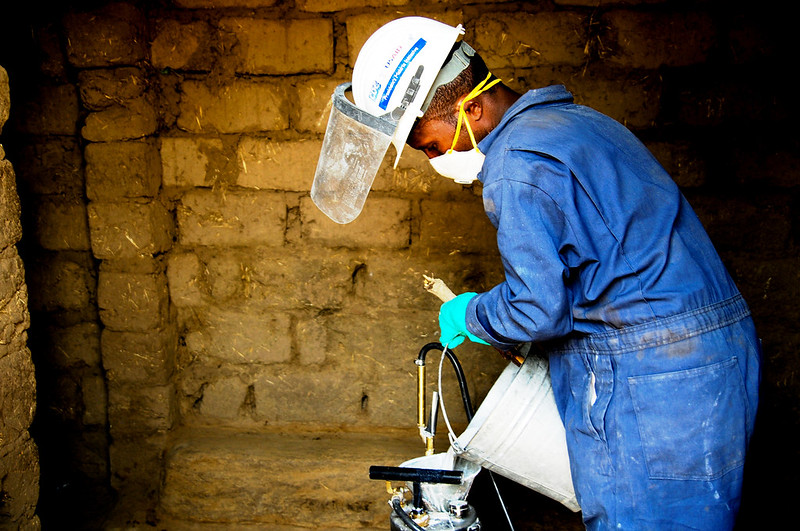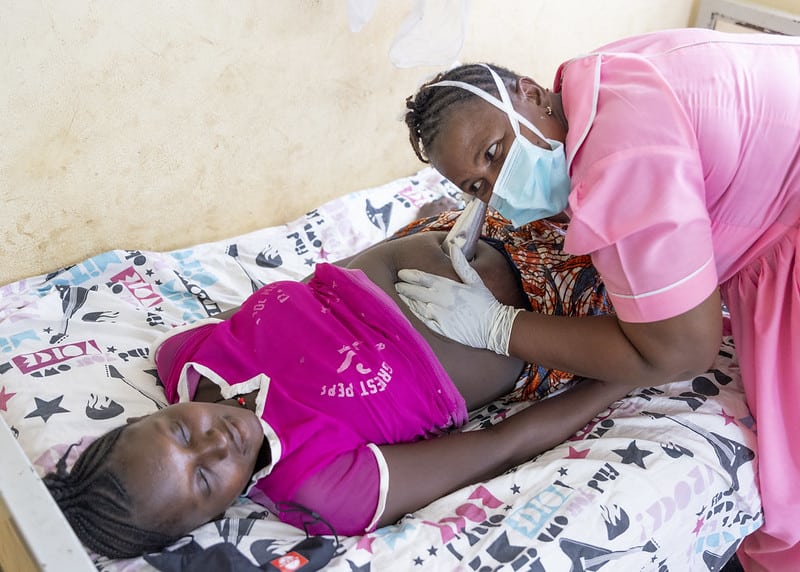When the time came for district health officials in Samfya to carry out their indoor residual spraying program, they found it difficult to compete with the myths and misconceptions perpetuated about the malaria prevention method in northern Zambia.
Rumors persisted about the negative effects of spraying. Some believed the chemicals in the spray caused the body to itch or develop skin rashes. Others felt it was harmful to pregnant women or attracted mosquitoes and cockroaches to their homes. Villagers would even abandon their homes once word spread that a spraying team was in the area.
“The issue of indoor spraying has been scaring us, especially because of community perceived side effects of chemicals that are used,” says Yvonne Kasongo, a Samfya resident.
But things changed once district health officials, through a partnership with the Johns Hopkins Center for Communication Programs’ Breakthrough ACTION Zambia project, began to engage traditional leaders and work with local radio stations to promote positive behaviors to prevent malaria. Phone-in programs, featuring traditional and local leaders, helped to shift perceptions about the use of insecticide-treated mosquito nets and indoor residual spraying (IRS), which is when mosquito repellents are sprayed inside the home to protect residents from bugs infected with the parasite that causes malaria.
“Listening to Chief Kasoma Bangweulu and officers from the District Health Office discuss the benefits of IRS and the chief’s plea for subjects to accept the IRS made me change my mind and allow officers to spray my house,” Kasongo says. “Contrary to what we have been hearing about side effects, the results were really good and we no longer have mosquitoes in our house.”
Dabwiso Tembo, Samfya District’s health promotion officer, says the partnership with Breakthrough ACTION, which sponsored transportation to radio stations for traditional leaders and the airing of jingles and radio spots, has contributed to a greater acceptance of indoor spraying across the district. The radio spots also promote the use of bed nets, another main method for malaria prevention.
Before the program, “our district had the lowest IRS acceptance due to misconceptions and myths around the chemicals,” Tembo says. During the most recent spraying efforts in fall 2019, “we experienced the highest acceptance among the citizens,” he says.
The District Health Office reports that significantly fewer households refused spraying compared to previous seasons. Data shows that, in 2018, nearly 44,000 houses were eligible for spraying and roughly 39,000 houses were sprayed – that’s about 5,000 homes where spraying was refused. In 2019, more than 47,200 houses were eligible and about 45,850 were sprayed – meaning only 1,350 refusals – an increase in acceptability of the program. The health department’s indoor spraying program runs from October to December each year and is part of the country’s national campaign to eliminate malaria.
Data from the 2018/2019 District Disease Burden Data Report suggest that health communication, net use and indoor spraying have reduced malaria cases in children under five, though the numbers remain high. One reason it is hard to keep transmission down is because Samfya sits on Lake Bangweulu, which has a very marshy shoreline, the perfect conditions for mosquito breeding.
In addition to an increase in acceptance of indoor spraying, the radio programs have also helped to raise awareness around the importance of malaria testing and treatment, says Vincent Kapungwe, station manager for KFM Radio in Mansa District.
Kapungwe said some residents have called in to talk about their experiences with health care providers who have prescribed malaria medication to patients without testing them first.
“Now [patients] know that they have to be tested before they can take the medication,” Kapungwe says. “We also need to have messages around taking the [full] course of treatment even if they start feeling better.”





